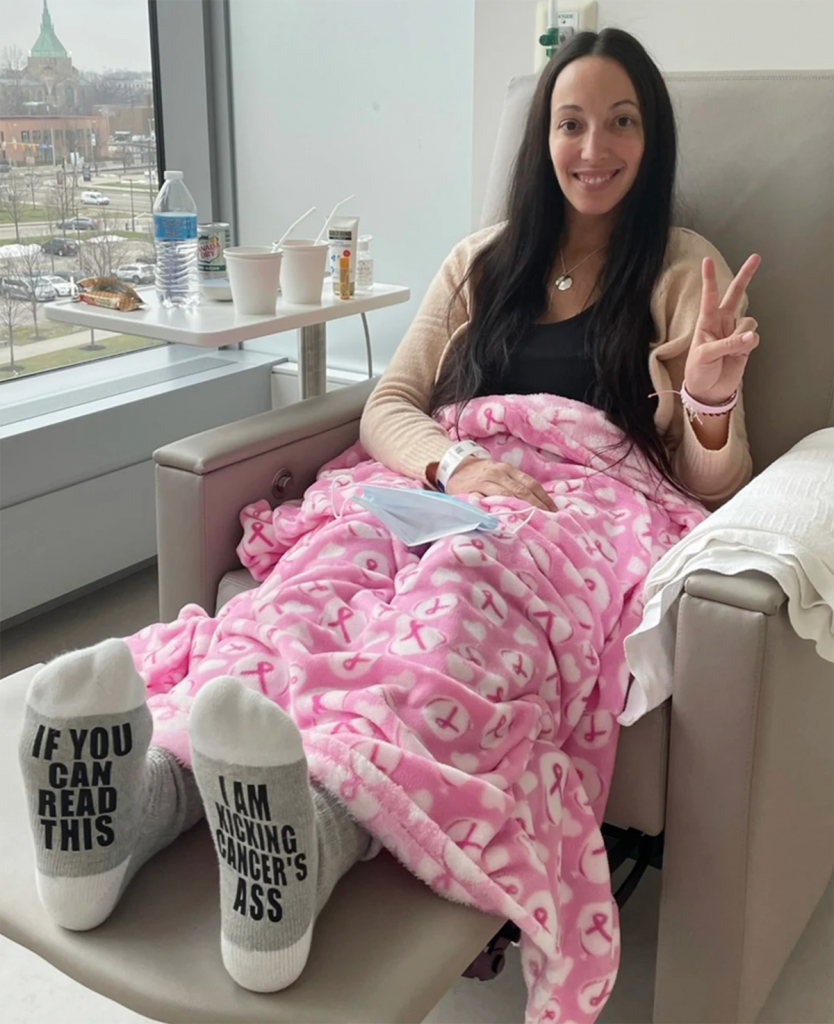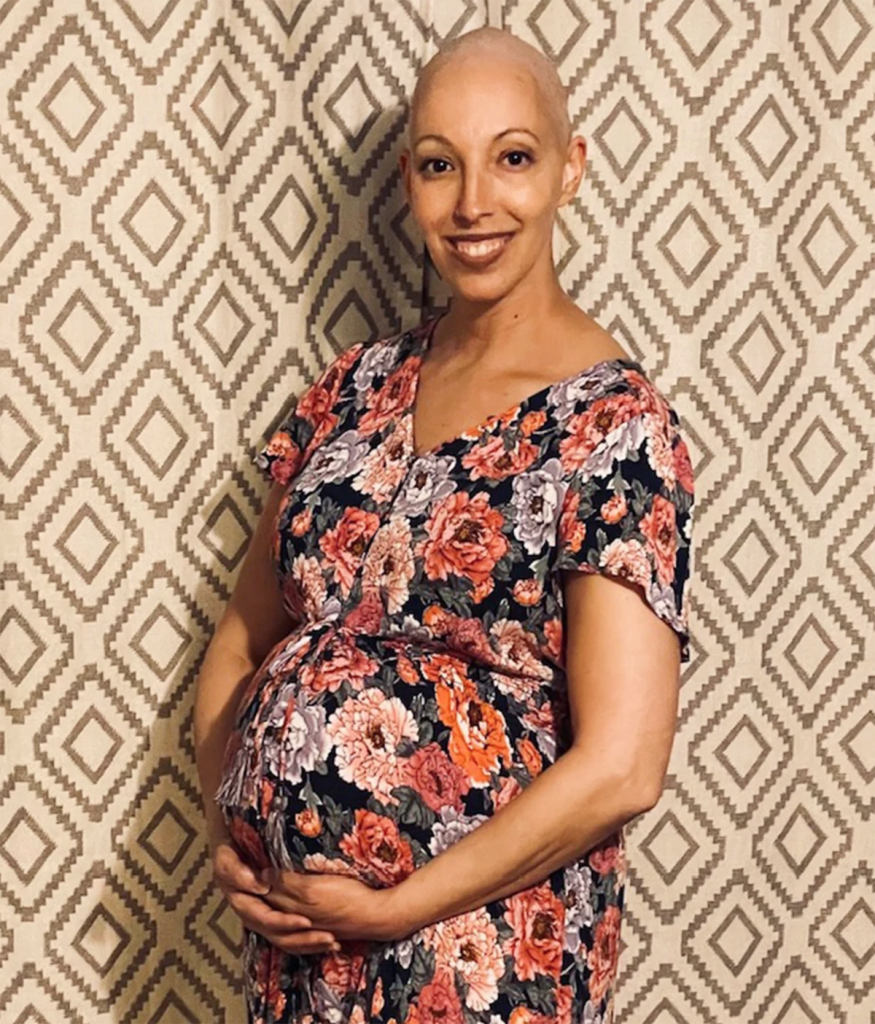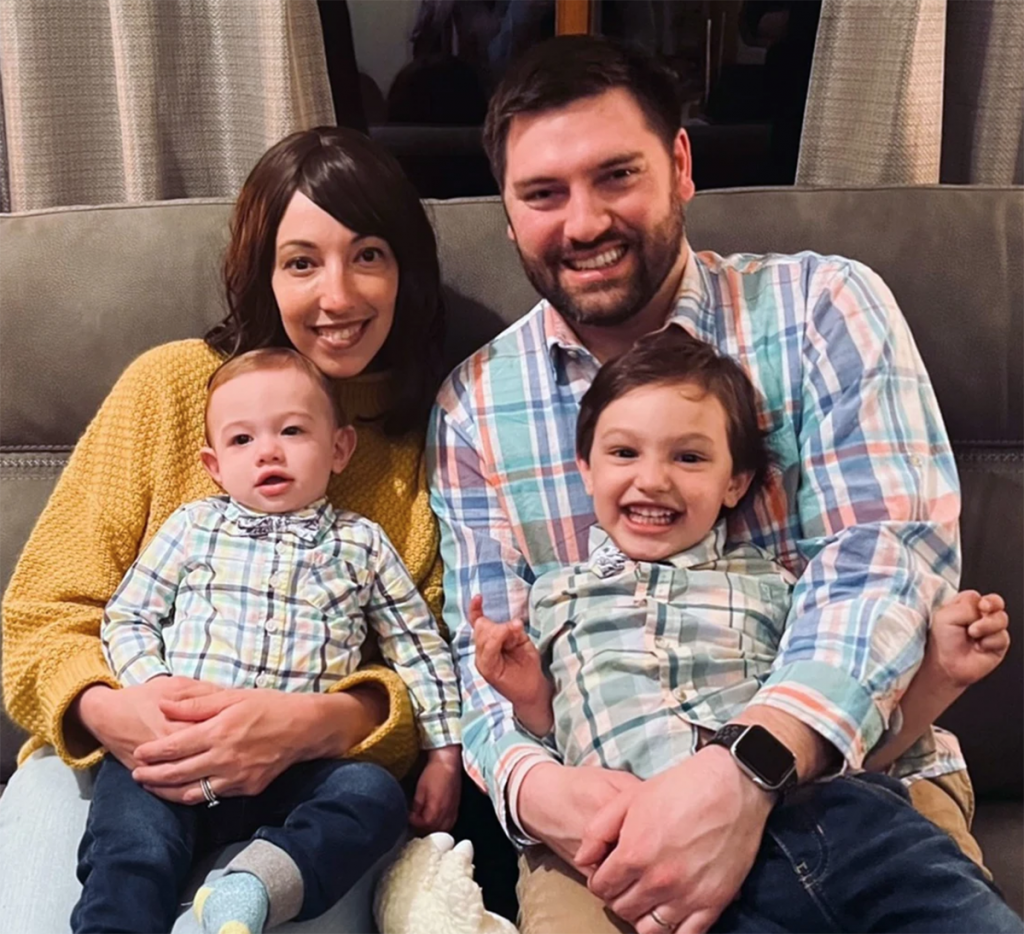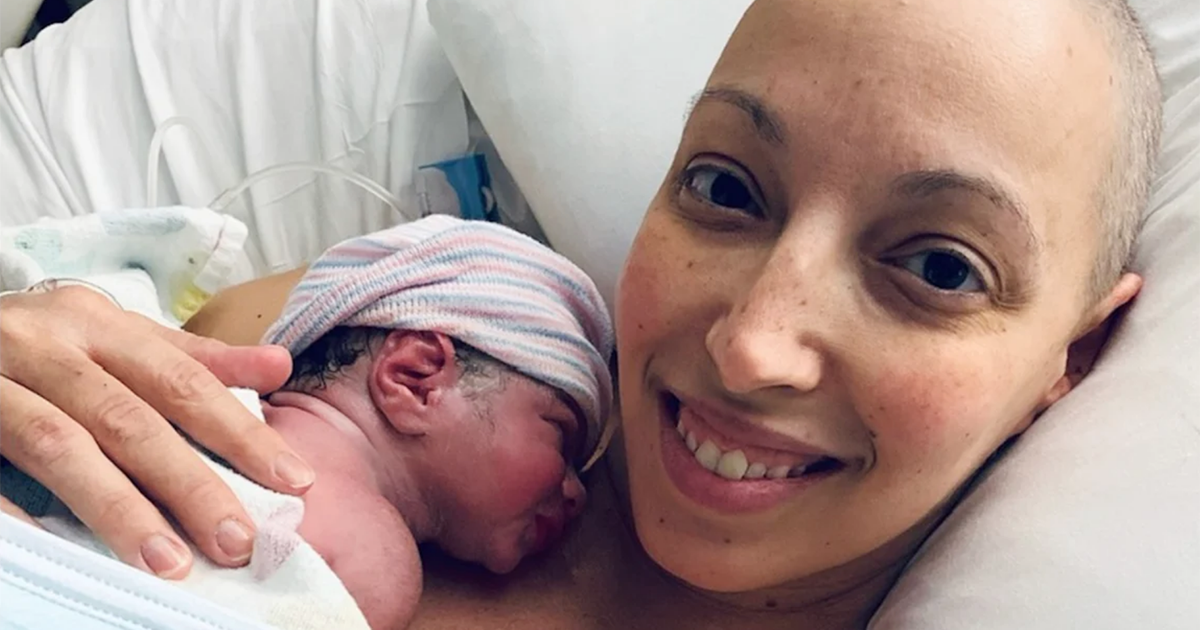Understanding Triple-Negative Breast Cancer
- A young mother often noticed "hard milk calcifications" in her breasts while breastfeeding her son, Luca. Then she noticed a lump. But she didn't think it could be breast cancer.
- Stephanie Rifici, 35, was told in September 2020 that she had stage 2 triple-negative breast cancer, a few days after finding out she was pregnant with her second child.
- It’s called triple-negative because it doesn’t have any of the main drivers of breast cancer the estrogen receptor, the progesterone receptor or the HER2 receptor and consequently doesn’t respond to treatments that target them.
"I figured it was just that hard milk calcification," Stephanie Rifici, 35, who's from Cleveland, Ohio, told TODAY. "I was a little concerned with it because it had been a couple of months and it was still there."
Read More
Stephanie was told in September 2020 that she had stage 2 triple-negative breast cancer.
"It is a more aggressive type of cancer and it's harder to treat," she explained. "That was scary getting that news that I have a more aggressive type. But a positive to that with being pregnant is that the pregnancy wasn't fueling the cancer."
But it's possible that cancer treatment can harm babies in the womb, so the couple didn't know what was going to happen. They didn't know if it was possible for Stephanie to receive treatment while pregnant.
"It's not a common thing being pregnant and being young and being diagnosed with cancer. So it was hard," Stephanie told TODAY. "A lot of doctors were like, 'There's not a lot of data.'"
"We struggled," husband Evan told TODAY. "Some people said, 'You've got to look out for Steph. She's the mom. You already have a son. You want to make sure that Steph's around for your other son.'"

"We were so happy we were able to get pregnant and have another son," he added. "(But) we don't want anything to happen to Steph."
The couple visited the Cleveland Clinic in their hometown to get a second opinion on what to do about Stephanie’s treatment. There, they were told there are, in fact, treatment options that pregnant people can tolerate. However, Evan and Stephanie admitted that they struggled with the decision.
"We would think, 'Whoa, are we jeopardizing Steph's well-being by keeping this baby?' Because obviously if the baby's born but Steph passes away what have we really accomplished?" Evan said.
"We were told that if we wanted to have the baby that there would be a method and a treatment plan and they felt fairly confident that we could keep the pregnancy and go with the treatment," he added.
Stephanie explained of her treatment regimen: "Once you're in the second trimester it's safe to do surgery and to do chemotherapy. My doctor recommended that I go back for another ultrasound on my tumor just to make sure that the tumor hasn't grown … with triple-negative, those tumors tend to grow very fast and very aggressive."
"The tumor board met and they actually decided that in my special case that they'd do my surgery first so they're able to get the tumor out of there with a low risk to the fetus, being so early in my pregnancy," Stephanie added. "Sometimes going under anesthesia and having surgery can actually put you in early labor."
The couple also learned that there are chemotherapies available for triple-negative breast cancer that don't spread to the mother's placenta. What does that mean exactly? Well, it means the baby will be safe while mom goes through chemotherapy treatment.
"We couldn't believe it," Stephanie said. "We were so ecstatic to hear that news that it's safe to do while being pregnant."
Evan and Stephanie welcomed a healthy baby boy named Leo on April 21, 2021. And after he was born, Stephanie was able to finish her chemotherapy, as well as 30 rounds of radiation treatment, which she finished recently.

"I would love it if I can even help one person in my situation to know there are options out there," Stephanie said.
Understanding Triple-Negative Breast Cancer
Breast cancer is the most common cancer among women in the United States, according to the U.S. Centers for Disease Control and Prevention.
Triple-negative breast cancer is one of the most aggressive forms of the disease and accounts for about 20% of all breast cancers.
What is Triple-Negative Breast Cancer?
It’s called triple-negative because it doesn’t have any of the main drivers of breast cancer the estrogen receptor, the progesterone receptor or the HER2 receptor and consequently doesn’t respond to treatments that target them. The main treatment for this type of breast cancer is chemotherapy, immunotherapy or participation in clinical trials.
If a patient has metastatic (stage 4) triple-negative breast cancer, the usual first line of therapy is chemotherapy. There are different chemotherapy options depending on the burden of disease, which refers to how sick someone is with their disease. Triple-negative breast cancer is usually responsive to chemotherapy.
"If the disease burden is not too great, meaning that a woman doesn't have a lot of symptoms, we can often start with oral chemotherapy," Dr. Elizabeth Comen, a breast oncologist at Memorial Sloan Kettering Cancer Center, told SurvivorNet during a previous interview.
In certain instances, a patient will become resistant to their first line of therapy and will have to switch to another chemotherapy. There are many different chemotherapies that are used for triple-negative breast cancer. There are also different clinical trials that may be available to patients.
Learn more about SurvivorNet's rigorous medical review process.


